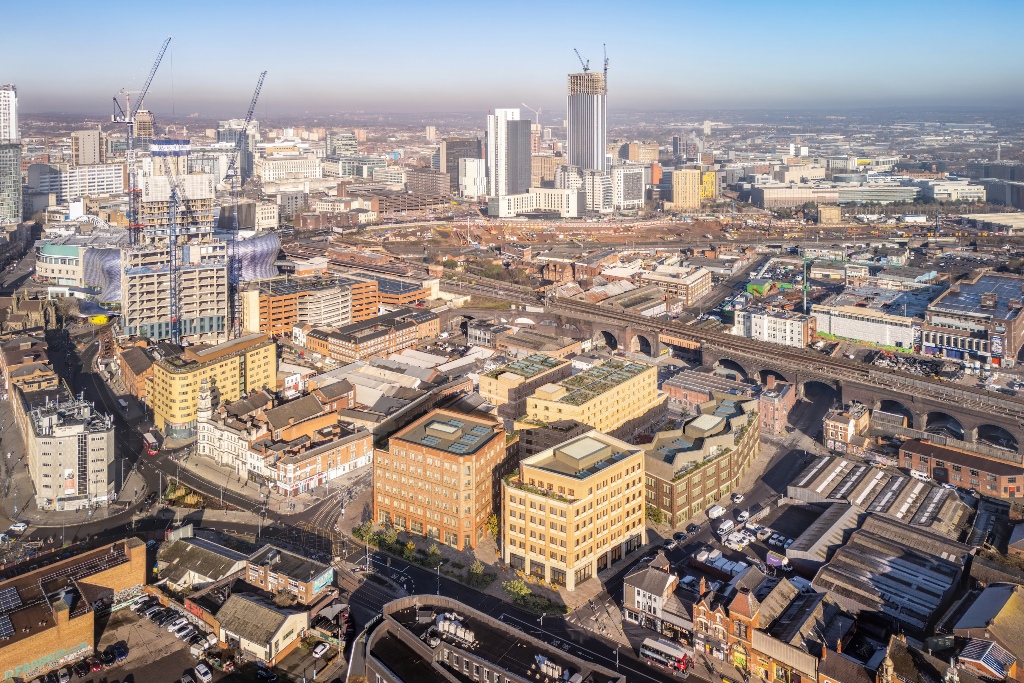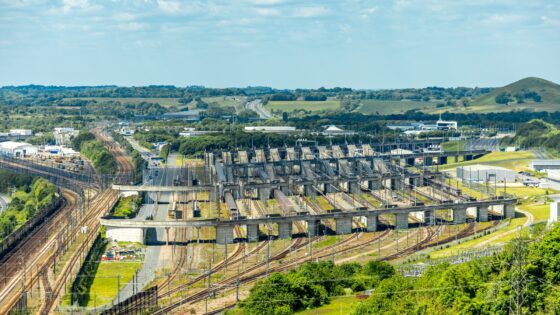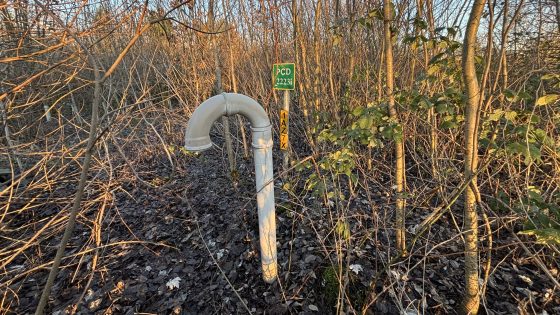£100m Digbeth regeneration: design, sustainability and services lens for engineers
Reviewed by Tom Sullivan

First reported on The Construction Index
30 Second Briefing
Birmingham City Council has resolved to approve Hartwell’s £100m Phoenix Yard scheme, redeveloping a 2.8‑acre former ironworks at the Digbeth gateway into 188,031 sq ft (17,467 sq m) of creative, media, educational and commercial space plus 240 residential units. Designed by Allford Hall Monaghan Morris, the buildings target BREEAM Excellent, EPC A, WELL, WiredScore Platinum, SmartScore and at least 10% biodiversity net gain, signalling high-performance envelopes and services. The project sits alongside HS2, the Metro Eastside expansion and the BBC’s new Typhoo Wharf hub, intensifying regeneration pressures on local infrastructure and utilities.
Technical Brief
- Capex is stated at £100m for redevelopment of the 2.8‑acre former ironworks site.
- Net internal area totals 188,031 sq ft of non-residential floorspace, enabling relatively high plot utilisation.
- Residential component comprises 240 units, implying a dense mixed-use massing on a constrained brownfield footprint.
- Public realm and landscaping are integral, suggesting significant hard–soft interface detailing and below-ground service coordination.
- Sustainability brief layers BREEAM Excellent, EPC A, WELL, WiredScore Platinum and SmartScore, driving complex MEP and digital infrastructure design.
- Minimum 10% biodiversity net gain will require measurable habitat creation or enhancement versus the existing industrial baseline.
- Hartwell’s consultant team includes Allford Hall Monaghan Morris, Ridge, Cundall, Hoare Lea, Macfarlane & Associates and Newmark, indicating multidisciplinary delivery from early stages.
Our Take
Within our 19 Infrastructure stories, Birmingham’s Digbeth and the £1.9bn Smithfield Market masterplan stand out as one of the few city-centre regeneration clusters where transport megaprojects (HS2 and the Metro Eastside expansion) are explicitly shaping land-use intensity and value uplift assumptions.
The 10% minimum biodiversity net gain at Phoenix Yard is at the upper end of what is being disclosed in our sustainability-tagged UK urban schemes, signalling that Birmingham City Council is likely to treat this as a benchmark for subsequent city-centre brownfield redevelopments.
Bringing the BBC into Typhoo Wharf alongside a £100m mixed-use build gives Digbeth a similar ‘anchor-tenant-led’ regeneration profile to other media-led quarters in our database, which typically see faster absorption of residential units and stronger pre-let interest in creative and tech office space.
Prepared by collating external sources, AI-assisted tools, and Geomechanics.io’s proprietary mining database, then reviewed for technical accuracy & edited by our geotechnical team.
Related Articles
Related Industries & Products
Construction
Quality control software for construction companies with material testing, batch tracking, and compliance management.
Mining
Geotechnical software solutions for mining operations including CMRR analysis, hydrogeological testing, and data management.
CMRR-io
Streamline coal mine roof stability assessments with our cloud-based CMRR software featuring automated calculations, multi-scenario analysis, and collaborative workflows.
HYDROGEO-io
Comprehensive hydrogeological testing platform for managing, analysing, and reporting on packer tests, lugeon values, and hydraulic conductivity assessments.
GEODB-io
Centralised geotechnical data management solution for storing, accessing, and analysing all your site investigation and material testing data.


